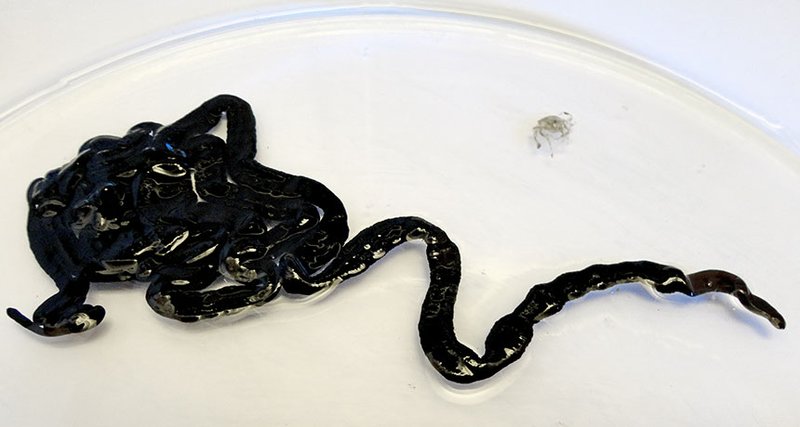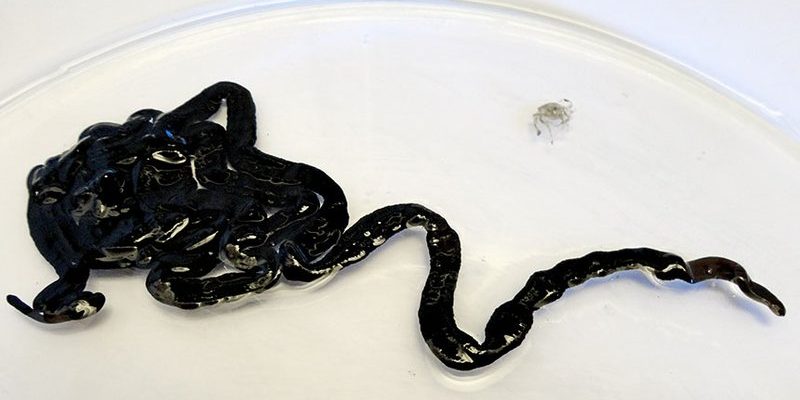
The bootlace worm, scientifically known as *Lineus longissimus*, is one of the longest worms on the planet. With its slick, elongated body, it can stretch to impressive lengths, sometimes over 30 meters (about 98 feet). Now, imagine such a creature oozing a colorful slime that not only looks strange but also has a very functional purpose. That’s what we’re diving into today—the composition and role of this toxic slime. So grab your coffee, and let’s explore this slimy subject together!
What is the Bootlace Worm?
To understand the bootlace worm, we should first get a visual. Picture a long, ribbon-like worm slinking through the ocean floor. This isn’t your average worm; it can be found in various coastal waters, especially in the North Atlantic. The bootlace worm is fascinating for many reasons, not just its length. It’s part of a group called Nemerteans, which are known for their unique way of moving and feeding.
The bootlace worm uses a unique proboscis—think of it like an extended tongue—to capture prey. This tongue-like structure can be shot out quickly to snag small fish or crustaceans. So, what makes it truly special? It’s that toxic slime, which serves several important purposes.
The Composition of Bootlace Worm Slime
Now, let’s get down to the nitty-gritty—the slime itself! The bootlace worm produces a type of slime known as a mucus secretion. This slime is not just a gooey mess; it has a sophisticated mix of chemicals. It contains proteins, enzymes, and even some toxic compounds, which help to deter predators.
Research shows that the slime’s toxicity can vary depending on the species and environmental conditions. For this reason, the bootlace worm’s slime is a remarkable example of evolution at work. It’s an effective way to ward off potential threats while also providing some benefits for the worm itself. Here’s what the slime can do:
- Defense: The toxins can cause irritation or even nausea in predators, making them think twice before munching on this worm.
- Movement: The slippery texture allows the worm to glide more easily through its habitat.
- Camouflage: The slime can also blend in with the seafloor, helping the worm hide from hunters.
Why Does the Bootlace Worm Produce Slime?
You might be wondering why on earth this worm needs to go through the trouble of producing such slime. Well, the answer lies in survival. In the underwater ecosystem, there are plenty of predators looking for a tasty snack, and the bootlace worm has to protect itself.
The slime serves multiple purposes, but its primary function is to deter predators. The toxic compounds in the slime can cause adverse effects when ingested. This means that potential threats quickly learn to avoid this unusual worm after a bad experience. If you think about it, it’s kind of like nature’s warning label.
Another crucial aspect is how the slime helps in hunting. When the bootlace worm captures its prey, the slime aids in immobilizing and securing the victim, allowing the worm to feast more easily. So, the slime isn’t just for defense; it actually plays a key role in the entire lifecycle of the bootlace worm.
How Toxic is Bootlace Worm Slime?
Let’s talk about the toxicity of the bootlace worm’s slime. It’s important to understand that not all creatures react the same way to this kind of toxic secretion. The compounds can cause skin irritation or gastrointestinal distress in some animals. However, humans typically aren’t affected unless they have a specific allergy or sensitivity.
Interestingly, researchers have found that certain toxins present in the slime could even have medicinal uses. While many people wouldn’t want to get up close and personal with the bootlace worm, its chemical makeup could lead to future discoveries in marine biology and pharmaceuticals.
While we’re on the subject, it’s worth noting that the toxicity of the slime depends on various factors, including temperature, the worm’s diet, and environmental conditions. So, while it’s generally sticky and slimy, its potency can change.
Comparing Bootlace Worms to Other Marine Worms
Now, let’s draw some comparisons. There are many types of marine worms out there, and not all produce slime like the bootlace worm. For example, earthworms or even ragworms don’t have the same level of toxicity or the impressive length.
These differences highlight the unique adaptations that each species has developed over time. While some worms focus on burrowing into the soil or sand, the bootlace worm has evolved to thrive in a different environment, using its slime as a primary defense mechanism. Here’s a quick breakdown of how the bootlace worm stacks up:
| Type of Worm | Length | Toxic Slime | Habitat |
|---|---|---|---|
| Bootlace Worm | Up to 30m | Yes, highly toxic | Coastal waters |
| Earthworm | Up to 30cm | No | Soil |
| Ragworm | Up to 25cm | Minimal | Marine environments |
As you can see, the bootlace worm is a standout in many ways, particularly with its slime!
Conservation and Threats Facing Bootlace Worms
Every creature has a role to play in its ecosystem, and the bootlace worm is no exception. Unfortunately, these unique worms face threats, particularly from pollution and climate change. As our seas warm and become more acidic, it can affect both the worm’s health and its habitat.
Conservation efforts are crucial to maintaining the balance of marine life. By keeping our oceans clean and safe, we can help ensure the survival of not just the bootlace worm but countless other marine organisms. It’s a reminder that even the weirdest creatures have their part to play in the grand scheme of things.
The bootlace worm and its toxic slime are a remarkable example of evolution and adaptation in nature. From its composition to its purpose, every aspect of this creature is designed for survival. Whether it’s deterring predators or assisting in feeding, the bootlace worm proves that sometimes, slimy is just what you need to be.
So next time you think about unique marine life, remember the bootlace worm—an incredible creature that showcases the wonders of nature and the mysteries still waiting to be unraveled. Who knows? There might be more fascinating secrets hidden in the depths of our oceans, waiting to surprise us.

